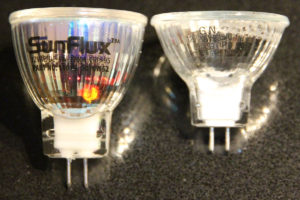I got my new toy yesterday: A Danfoss Link CC and five Danfoss Living Connect RA thermostats. So here’s a few comments – compiled from a bit of research and my first impression of the system.
First of all, these are the products I bought:
- Danfoss Link CC NSU – 014G0287, EAN 5702425112881. SW version 4.1 (after upgrading it).
- Living Connect (RA) – 014G0001, EAN 5702420110257. SW version 4.02 (can’t be upgraded), production date November 19th 2016.
I thought about buying the Living Connect Z-Wave version instead – 014G0013. But unfortunately this version cannot communicate with Link CC. So you have to make a tough decision between a closed (but working and tested) system and an open system where you have to implement everything from scratch. This software version document states:
- Version 2.06 – 11-03-2011: The initial software for living connect® – can be controlled by Danfoss Link™ CC or by a 3rd party Z-wave controller.
- Version 3.02 – 25-05-2012: Standard Z-wave functionality removed, meaning that living connect® no longer can be controlled by a 3rd party controller.
That’s a shame. So if you want something that works and want to play, you’ll have to buy two entire systems and switch all your thermostats whenever you switch between feeling creative and conservative. Oh, and you can’t upgrade the firmware, no matter which of the solutions you choose.
In my case I actually don’t need to communicate with the thermostats myself. Had there just been an API for Link CC (and/or a bunch of open Danfoss Cloud web services), a lot of interesting things could have been easy to implement. Like telling the system when you are home or almost home – based on anything imaginable. Geofences, near Wi-Fi network, etc. Temperature readings from 3rd party software would also have been nice. Please make something like this, Danfoss!
Well, back to reality. The Link CC is actually pretty nice, but I’d like to control the system with my phone, and only with my phone. Or my tablet. Or from a laptop or PC (browser). Anything but another wall-mounted touchscreen in my house. It would have been nice with full functionality in the app, and a variant of the Link CC without a screen – just a small Z-Wave controller with Danfoss software. The energy consumption would have been lower. About 2.8 W as the Link CC uses is not bad, but not great either.
The thermostats uses two AA Alkaline batteries. 1.5 V required, so it’s not possible to use 1.2 V rechargeable (e.g. Eneloop) batteries. I was almost done phasing out all Alkaline batteries in the house, even those in remote controls. But now I’m stuck with 10 Alkalines batteries again. It’s not a major problem, but a bit annoying and not “green”.
All communication from the app goes through Danfoss Cloud which communicates with Link CC. Also when you’re at home and on the same Wi-Fi network as the Link CC. All ports are closed on the Link CC. So if your internet is down, so is your contact with your Danfoss system (from the app). If Danfoss’ servers are down, so is your contact… If Danfoss goes down or decides to shut down support for the Living Connect system, you’ll lose contact with your Danfoss system. I would have preferred at least an option to have an operational system without an external dependency to Danfoss.
You don’t care about power consumption, rechargeable batteries, open API’s, cross-system integration and companies (or hackers) being able to control your home temperature? Well, these things aside the system is actually pretty neat. See app screenshots and google Danfoss Living Connect to read more about the system and Link CC.
Update: After having used the system for some weeks, I’m almost ready to return the crap. I’ll run a few more tests, but the results so far are discouraging. With my old thermostats I had consistently 42-43 °C cooling. Now we’re down to 36-37 °C and the consumption in m3 has increased. This is true whether we use night-time drop or not. So the system will actually cost you money and leave a negative environmental impact, instead of the opposite.

